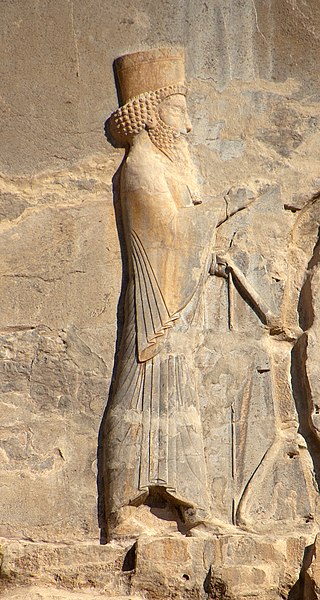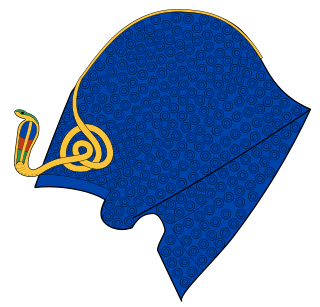Related Research Articles

The 2nd century BC started the first day of 200 BC and ended the last day of 101 BC. It is considered part of the Classical era, although depending on the region being studied, other terms may be more suitable. It is also considered to be the end of the Axial Age. In the context of the Eastern Mediterranean, it is the mid-point of the Hellenistic period.
This article concerns the period 369 BC – 360 BC
Year 343 BC was a year of the pre-Julian Roman calendar. At the time it was known as the Year of the Consulship of Corvus and Arvina. The denomination 343 BC for this year has been used since the early medieval period, when the Anno Domini calendar era became the prevalent method in Europe for naming years.
Year 380 BC was a year of the pre-Julian Roman calendar. At the time, it was known as the Year of the Tribunate of Poplicola, Poplicola, Maluginensis, Lanatus, Peticus, Mamercinus, Fidenas, Crassus and Mugillanus. The denomination 380 BC for this year has been used since the early medieval period, when the Anno Domini calendar era became the prevalent method in Europe for naming years.

Arses, known by his regnal name Artaxerxes II, was King of Kings of the Achaemenid Empire from 405/4 BC to 358 BC. He was the son and successor of Darius II and his mother was Parysatis.

Ochus, known by his dynastic name Artaxerxes III, was King of Kings of the Achaemenid Empire from 359/58 to 338 BC. He was the son and successor of Artaxerxes II and his mother was Stateira.

Nectanebo II was the last native ruler of ancient Egypt, as well as the third and last pharaoh of the Thirtieth Dynasty, reigning from 358 to 340 BC.

The Thirtieth Dynasty of Egypt is usually classified as the fifth Dynasty of the Late Period of ancient Egypt. It was founded after the overthrow of Nepherites II in 380 BC by Nectanebo I, and was disestablished upon the invasion of Egypt by the Achaemenid king Artaxerxes III in 343 BC. This is the final native dynasty of ancient Egypt; after the deposition of Nectanebo II, Egypt fell under foreign domination.

The Late Period of ancient Egypt refers to the last flowering of native Egyptian rulers after the Third Intermediate Period in the 26th Saite Dynasty founded by Psamtik I, but includes the time of Achaemenid Persian rule over Egypt after the conquest by Cambyses II in 525 BC as well. The Late Period existed from 664 BC until 332 BC, following a period of foreign rule by the Nubian 25th Dynasty and beginning with a short period of Neo-Assyrian suzerainty, with Psamtik I initially ruling as their vassal. The period ended with the conquests of the Persian Empire by Alexander the Great and establishment of the Ptolemaic dynasty by his general Ptolemy I Soter, one of the Hellenistic diadochi from Macedon in northern Greece. With the Macedonian Greek conquest in the latter half of the 4th century BC, the age of Hellenistic Egypt began.

Nectanebo I was an ancient Egyptian pharaoh, founder of the last native dynasty of Egypt, the 30th.
The history of Persian Egypt is divided into two eras following the first Achaemenid conquest of Egypt punctuated by an interval of independence:

Djedhor, better known as Teos or Tachos, was an ancient Egyptian pharaoh of the 30th Dynasty.
Nepherites II or Nefaarud II was the last pharaoh of the feeble and short-lived Twenty-ninth Dynasty, the penultimate native dynasty of Egypt.

Hakor or Hagar, also known by the hellenized forms Achoris or Hakoris, was an ancient Egyptian pharaoh of the 29th Dynasty. His reign marks the apex of this feeble and short-lived dynasty, having ruled for 13 years – more than half of its entire duration.

The Ptolemaic Kingdom or Ptolemaic Empire was an Ancient Greek polity based in Egypt during the Hellenistic period. It was founded in 305 BC by the Macedonian general Ptolemy I Soter, a companion of Alexander the Great, and ruled by the Ptolemaic dynasty until the death of Cleopatra VII in 30 BC. Reigning for nearly three centuries, the Ptolemies were the longest and final dynasty of ancient Egypt, heralding a distinctly new era for religious and cultural syncretism between Greek and Egyptian culture.

The khepresh (ḫprš) was an ancient Egyptian royal headdress. It is also known as the blue crown or war crown. New Kingdom pharaohs are often depicted wearing it in battle, but it was also frequently worn in ceremonies. While it was once called the war crown by many, modern historians refrain from characterizing it thus.

The Thirty-first Dynasty of Egypt, also known as the Second Egyptian Satrapy, was effectively a satrapy of the Achaemenid Persian Empire between 343 BC to 332 BC. It was founded by Artaxerxes III, the King of Persia, after his reconquest of Egypt and subsequent crowning as Pharaoh of Egypt, and was disestablished upon the conquest of Egypt by Alexander the Great.

Tjahapimu or Tjahepimu, was an ancient Egyptian prince, general and regent during the 30th Dynasty.
References
- ↑ David M. Lewis, ed. (2005). "Egypt, 404–322 B.C". The Cambridge Ancient History. Vol. VI: The Fourth Century B.C. (3rd ed.). Cambridge: Cambridge University Press. p. 341. ISBN 0-521-85073-8. OCLC 121060.